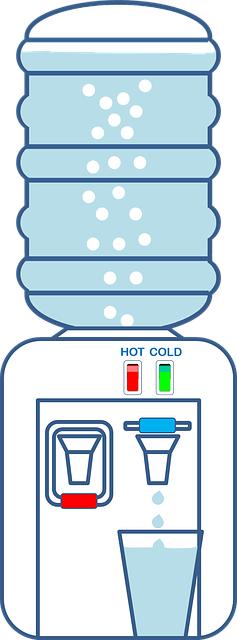How Long Should I Stay in Ice Bath? A Guide to Optimal Soaking

Are you ready to take the plunge into the world of ice baths but find yourself unsure of how long to stay submerged in the chilling waters? Fear not, for we have crafted the ultimate guide to help you achieve optimal soaking! In this article, we will explore the science behind ice baths and provide you with expert advice on determining the ideal duration for your icy experience. Get ready to dive in and discover the perfect balance between the invigorating benefits of cold therapy and your body’s tolerance. So grab your towel, brace yourself for the cold, and let’s dive right in!
Contents
- 1. Understanding the Benefits: The Science Behind Ice Baths and How They Aid Recovery
- 2. Determining Individual Tolerance: Factors to Consider for an Ideal Ice Bath Duration
- 3. The Role of Intensity: Tailoring Soaking Time Based on Exercise Intensity Levels
- 4. Gradual Progression: Building up Endurance and Adjusting Ice Bath Duration Over Time
- 5. Proper Timing: When to Take an Ice Bath for Maximum Effectiveness
- 6. Strategies for Recovery: Combining Ice Baths with Other Techniques for Optimal Results
- 7. Listening to Your Body: Recognizing Signs of Overexposure and Adjusting Soaking Time Accordingly
- 8. Post-Ice Bath Care: Steps to Take After a Soak to Enhance Recovery and Minimize Discomfort
- 9. Experimenting with Temperature: Exploring Different Ice Bath Temps and Their Effects on Soaking Duration
- 10. Seeking Professional Guidance: Consulting with Sports Specialists for Personalized Ice Bath Recommendations
1. Understanding the Benefits: The Science Behind Ice Baths and How They Aid Recovery
Ice baths have long been used by athletes and fitness enthusiasts as a way to aid in recovery and reduce muscle soreness. But what exactly are the benefits of taking an ice bath? The science behind it all lies in the concept of cold therapy.
When you immerse your body in icy water, it causes vasoconstriction, which is the narrowing of blood vessels. This decrease in blood flow helps to reduce inflammation and swelling in the muscles. Additionally, the cold temperature helps to numb nerve endings, providing pain relief for those achy muscles.
So how long should you stay in an ice bath? The general recommendation is to soak for 10-15 minutes. This timeframe allows your body to reap the benefits of cold therapy without overdoing it. It’s important to note that staying in an ice bath for too long can lead to adverse effects, such as frostbite or hypothermia.
To enhance the effectiveness of your ice bath, you can also incorporate contrast therapy. This involves alternating between periods of immersion in icy water and warm water. The contrast in temperatures helps to further stimulate blood flow and promote recovery.
In conclusion, ice baths can be a valuable tool in your recovery arsenal. By understanding the science behind them and finding the optimal soaking time, you can maximize the benefits and aid in your body’s healing process. So next time you’re contemplating an ice bath, remember to take the plunge for 10-15 minutes and allow your muscles to thank you for it later.
2. Determining Individual Tolerance: Factors to Consider for an Ideal Ice Bath Duration
Determining the ideal duration for an ice bath can vary from person to person, as it depends on several factors. Understanding these factors will enable you to find the optimal soaking time that suits your individual tolerance. Here are some key considerations to keep in mind:
-
Body Composition: Individuals with a higher percentage of body fat tend to be more sensitive to the cold and may need to spend less time in the ice bath compared to those with lower body fat levels.
-
Experience Level: If you’re new to ice baths, it’s important to start with shorter durations and gradually increase the time as your body adapts. Beginners may find 5-10 minutes sufficient, while more experienced individuals can tolerate longer sessions.
-
Temperature of the Water: The temperature of the ice bath plays a crucial role in determining the duration. If the water is extremely cold, it may be necessary to reduce the soaking time to prevent discomfort or potential injuries. On the other hand, if the water is not cold enough, you might need a longer duration to achieve the desired benefits.
- Purpose of the Ice Bath: The purpose behind taking an ice bath can also influence the optimal duration. If you’re aiming to reduce muscle soreness post-workout, a shorter duration of 8-10 minutes may suffice. However, if you’re seeking to enhance recovery after an intense training session, extending the soak to 15-20 minutes might be more beneficial.
Keep in mind that these factors are general guidelines, and individual circumstances can vary. Experiment with different durations to determine what works best for you, always considering your comfort and safety. Remember to listen to your body and adjust the duration accordingly.
3. The Role of Intensity: Tailoring Soaking Time Based on Exercise Intensity Levels
In order to maximize the benefits of an ice bath, it is important to tailor the soaking time based on your exercise intensity levels. The intensity of your workout directly affects the amount of time you should spend in the ice bath, as this determines the extent of muscle damage and inflammation.
For low intensity workouts, such as a light jog or gentle stretching, a soaking time of 5-10 minutes is sufficient to reap the benefits. These shorter sessions help to reduce muscle soreness and promote recovery without overwhelming your body with intense cold exposure.
On the other hand, high intensity workouts, such as heavy weightlifting or intense interval training, warrant longer ice bath sessions. Aim for 10-15 minutes in the ice bath to allow for a deeper reduction in inflammation and enhanced recovery.
Remember, it’s important to strike a balance. While longer ice bath sessions may provide greater benefits, it is crucial to listen to your body and not exceed what is comfortable for you. If you’re new to ice baths, start with shorter durations and gradually work your way up. Additionally, always consult with a healthcare professional before incorporating ice baths into your routine, especially if you have any underlying health conditions.
To summarize, the role of intensity in ice bath soaking time is key to optimizing your recovery. By tailoring the duration based on the intensity of your exercise, you can effectively reduce muscle soreness, inflammation, and enhance overall recovery.
4. Gradual Progression: Building up Endurance and Adjusting Ice Bath Duration Over Time
To build up endurance and adjust your ice bath duration over time, it’s important to take a gradual approach. Just like with any physical training, you want to avoid pushing your body too hard, too soon. By following these simple steps, you can safely increase your time in the ice bath and reap the benefits of this powerful recovery tool.
1. Start Slow
- Begin with short durations of 1-2 minutes in the ice bath.
- Focus on acclimating your body to the cold temperature and getting comfortable with the sensation.
- Don’t be discouraged if you find it challenging at first – it takes time to adapt.
2. Gradually Increase Time
- Once you feel comfortable with your initial ice bath duration, gradually increase the time by 30 seconds to 1 minute each session.
- Monitor your body’s response and listen to any discomfort or signals that you may need to slow down.
- Stay in tune with your body and adjust the duration accordingly.
3. Listen to Your Body
- Everyone’s tolerance and response to ice baths vary, so it’s essential to listen to your body.
- If you experience prolonged shivering, numbness, or extreme discomfort, it’s a sign to decrease your time or seek professional advice.
- Remember, the goal is to gradually build up endurance, not to push yourself to the point of pain or injury.
By following these gradual progression guidelines, you can safely and effectively build up your endurance and adjust your ice bath duration over time. Remember, consistency is key, so stick to a regular ice bath routine and enjoy the benefits of improved recovery and enhanced performance.
5. Proper Timing: When to Take an Ice Bath for Maximum Effectiveness
One of the key factors to consider when taking an ice bath is the timing. Timing your ice bath correctly can greatly enhance its effectiveness and maximize its benefits. Here are a few guidelines to help you determine the optimal timing for your ice bath:
- Pre-Workout: Taking an ice bath before your workout can have several advantages. It can help reduce inflammation and muscle soreness, allowing you to perform at your best during your training session. Additionally, it can increase blood flow to the muscles, improving their oxygenation and promoting faster recovery.
- Post-Workout: Another ideal time to take an ice bath is immediately after your workout. This can aid in reducing the accumulation of lactic acid in the muscles, which can contribute to post-exercise fatigue. The cold temperature of the ice bath can also help constrict blood vessels, reducing any swelling or inflammation caused by intense exercise.
- Rest Days: Ice baths on rest days can still be beneficial. It can help speed up the recovery process by minimizing muscle damage and inflammation. By incorporating ice baths into your recovery routine, you can enhance your overall athletic performance and decrease the risk of injuries.
It’s important to note that the duration of your ice bath should also be taken into consideration. The general recommendation is to stay in the ice bath for around 10-15 minutes. However, individual tolerance may vary, and it’s crucial to listen to your body. If you’re new to ice baths, you can start with shorter durations and gradually increase the time as your body adapts.
Table: Timing Recommendations
| Type | Timing |
|---|---|
| Pre-Workout | 20-30 minutes before |
| Post-Workout | Immediately after |
| Rest Days | Anytime for recovery |
6. Strategies for Recovery: Combining Ice Baths with Other Techniques for Optimal Results
Ice baths are a popular recovery technique used by athletes and fitness enthusiasts alike. But did you know that combining ice baths with other techniques can enhance your results even further? In this post, we will explore strategies for recovery that go beyond just the ice bath, offering insights into how long you should stay in the cold water for optimal soaking.
1. Contrast Therapy: Alternating between cold and hot treatments can help improve circulation and reduce inflammation. After your ice bath, try taking a warm shower or sitting in a hot tub for a few minutes. This contrast in temperatures can aid in flushing out toxins and speeding up the recovery process.
2. Stretching and Mobility Exercises: While in the ice bath, it’s a great time to incorporate some stretching and mobility exercises. The cold water helps to numb any pain or discomfort, allowing for deeper stretches without the risk of injury. Focus on areas that feel tight or tense, and hold each stretch for at least 30 seconds for maximum benefits.
3. Compression Therapy: Using compression garments or wraps can aid in reducing swelling and enhancing blood flow. After you’ve completed your ice bath, consider wearing compression socks, sleeves, or even using compression boots for a few hours. This can help accelerate the removal of waste products from your muscles and promote faster recovery.
By combining these strategies with your ice bath routine, you can optimize your recovery and get back in the game faster. Remember, it’s essential to listen to your body and adjust these techniques according to your unique needs. Stay consistent, be patient, and reap the benefits of a well-rounded recovery approach.
7. Listening to Your Body: Recognizing Signs of Overexposure and Adjusting Soaking Time Accordingly
When it comes to ice baths, it’s important to prioritize your body’s signals and adjust your soaking time accordingly. Overexposure to the extreme cold can have adverse effects and hinder your recovery process. By paying attention to these warning signs, you can optimize the benefits of an ice bath while minimizing any potential risks:
- Shivering: Shivering is a natural response to cold temperatures, but if it becomes uncontrollable or prolonged during your ice bath, it may indicate overexposure. Consider shortening your soaking time to avoid hypothermia.
- Numbness and Tingling: Feeling numb or experiencing tingling sensations in your extremities can be a sign that your body has been exposed to the cold for too long. Take it as an indication to step out of the ice bath and warm up.
- Difficulty Breathing: If you find it increasingly challenging to breathe or notice a shortness of breath while submerged in the icy water, it’s crucial to recognize this as a sign of overexposure. Cut your session short and allow your body to recover.
Remember, everyone’s tolerance to cold varies, so these signs may vary from person to person. It’s essential to listen to your body and adjust your ice bath duration accordingly. By acknowledging the signals your body sends, you can ensure a safe and effective ice bathing experience.
8. Post-Ice Bath Care: Steps to Take After a Soak to Enhance Recovery and Minimize Discomfort
Once you’ve completed your ice bath, it’s important to follow a few steps to optimize your recovery and minimize any discomfort. Taking these post-ice bath care measures will ensure that you experience the full benefits of your soak and allow your body to recover effectively.
1. Gradually warm up: After your ice bath, slowly transition your body back to its normal temperature. This can be done by taking a warm, not hot, shower or bath. Avoid using hot water immediately as it may shock your system.
2. Gentle stretching: Perform some light stretches to help your muscles relax and prevent any stiffness or soreness. Focus on the areas that received the most stress during your training or workout. This can include your legs, hips, and lower back.
3. Hydrate and refuel: Replenish your body with fluids and nutrients lost during the ice bath. Drinking water or a sports drink can help rehydrate you and restore electrolyte balance. Additionally, consuming a post-workout snack or meal that includes protein and carbohydrates can aid in muscle recovery.
4. Rest and recover: Allow your body some time to rest and rejuvenate. Take it easy for the rest of the day and prioritize getting a good night’s sleep. Your body needs time to repair and rebuild after intense physical activity, and proper rest is key to this process.
Remember, each person’s recovery needs may vary, so listen to your body and adjust these post-ice bath care steps according to what makes you feel the most comfortable. By taking these measures, you’ll ensure a smoother recovery and be ready to tackle your next training session with renewed energy and reduced muscle soreness.
9. Experimenting with Temperature: Exploring Different Ice Bath Temps and Their Effects on Soaking Duration
In this post, we will dive deep into the exciting world of ice baths and explore the effects of different temperatures on soaking duration. Whether you’re an athlete looking to enhance your post-workout recovery or simply seeking the invigorating benefits of a cold bath, this guide will help you determine the optimal time to stay in an ice bath.
Experimenting with temperature is key to understanding how your body responds to cold therapy. By adjusting the temperature of your ice bath, you can customize your experience to maximize its benefits. Below are a few temperature ranges worth exploring and their potential effects on soaking duration:
1. Mild Chill (50-60°F): This temperature range provides a gentle introduction to cold therapy. You can start with shorter durations of 5-10 minutes and gradually increase as your body adapts. Benefits may include reduced inflammation, improved circulation, and enhanced recovery.
2. Bracing Cold (40-50°F): For a more intense experience, lower the temperature of your ice bath. Soaking for 10-15 minutes in this range can help accelerate recovery by constricting blood vessels and reducing muscle soreness.
3. Arctic Freeze (below 40°F): Caution is advised when exploring temperatures below 40°F. Consult with a healthcare professional before attempting this level of cold therapy. Extreme cold can have potent effects on the body, necessitating shorter durations (less than 10 minutes) to avoid potential tissue damage. Benefits may include increased alertness, elevated mood, and improved immunity.
Keep in mind that individual tolerance to cold therapy varies, and it’s essential to listen to your body. Gradually acclimating to colder temperatures and paying attention to any discomfort or negative reactions is crucial. We recommend consulting with a medical professional to determine the safest and most effective ice bath temperature for your specific needs.
To summarize, experiment with different ice bath temperatures to find what works best for you. Start with milder temperatures and gradually progress to colder ranges as your body adapts. Remember to prioritize safety and always seek professional guidance when exploring extreme cold therapy. Happy soaking!
10. Seeking Professional Guidance: Consulting with Sports Specialists for Personalized Ice Bath Recommendations
Sometimes, it’s not enough to rely on generalized recommendations when it comes to ice bath therapy. It’s always a good idea to consult with sports specialists who can provide personalized recommendations based on your individual needs and goals. These professionals have the expertise to assess your specific situation and provide guidance on the optimal duration for your ice bath sessions.
When you consult with a sports specialist, they will take into consideration factors such as your fitness level, the intensity of your training, and any specific injuries or conditions you may have. This personalized approach ensures that you are getting the most out of your ice bath therapy and avoiding any potential risks or negative effects.
One key aspect that a sports specialist will focus on is the duration of your ice bath sessions. This may vary depending on your needs and goals, but generally, it is recommended to start with shorter durations and gradually increase them over time. A typical starting point for beginners is around 5-10 minutes, while more experienced athletes may benefit from longer sessions of 15-20 minutes. However, it’s important to remember that everyone’s tolerance and response to cold therapy is different, so it’s crucial to listen to your body and adjust accordingly.
In addition to duration, a sports specialist may also provide recommendations on the temperature of the ice bath, the frequency of your sessions, and any additional techniques or exercises that can complement your ice bath therapy. Keep in mind that these recommendations are tailored specifically to you, so it’s essential to follow them closely to maximize the benefits of your ice bath sessions.
Remember, seeking professional guidance from sports specialists can help you optimize your ice bath therapy and ensure that you are on the right track towards achieving your goals. Don’t hesitate to reach out to these experts for personalized recommendations that can take your recovery and performance to the next level. In conclusion, determining the optimal duration for your ice bath sessions is crucial for reaping the maximum benefits without pushing your body too far. While there is no one-size-fits-all answer, following the guidelines discussed in this guide will surely set you on the right path. Remember, starting with shorter sessions and gradually increasing the time as your body adapts is the key to success. Always listen to your body’s signals and seek professional advice if needed. So go ahead, embrace the ice and unlock the remarkable potential of this ancient wellness practice. Your body will thank you!














